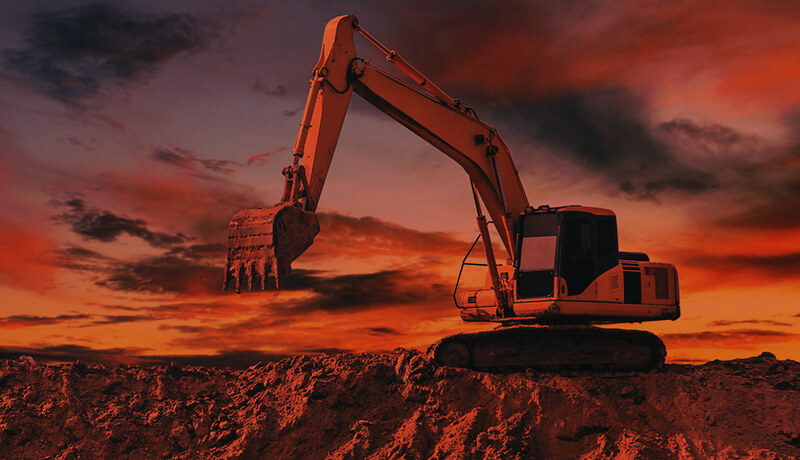Loading...
ZONE LAGO ALUMINÉ
Excellent exposures of granites are located along the valley of the river Aluiné, on its left bank; they can also be found between the lake Ñorquinco and the main part of the ranch house Pulmarí.
These are granitoids that are part of the Granodiorite Paso de Icalma, of fine to medium grains, in general of color light grey to bluish grey; they present granular hypidiomorphic to alliotromorphic textures, with plagioclase An 20-30, pertitic orthoclase and quartz. Between the mafites, the brownish red biotite is predominant over greenish blue hornblende. Within the accessories the following can be observed: apatite, titanite, zircon and epidote, with prehnite and clorite as biotite alteration. (Cucchi et al, 2006- in Danieli et al,2011)
From some of these outcrops, along the path that leads from Pulmarí to the lake Ñorquinco, several rock blocks were extracted from which at the time (decade of 1980) plates for the manufacturing of floors were obtained. These plates were commercialized in the regional market with the name of “Gris Pulmarí” (grey Pulmarí). The rocks generally present homogeneous color and texture, although the presence of xenolith or resisters of dark color is common, ranging from 1 to 15 cm. of diameter. Veins or small veins can also be observed and they are generally used by quarry workers as structural guides for extraction of blocks.
Crystalline rocks of black color are frequently present in these granitic outcrops; they are gabbros and micro-gabbros which are exposed in continue outcrops on both banks of the river Pulmarí, upstream from the lake Los Giles, and in the area of the quarry Granito Gris Lonco Luan Expte Nº 12782/87 owned by Minera Cordillera del Viento. It is important to mention that in front of the lake Verde, in lands of CorporaciÓ n Interestadual Pulmarí a quarry called “María Juana&rdquo was installed for the extraction of blocks. Today inactive, the quarry is located on the south bank of the river Pulmarí, 46 kilometers away from AluminÉ. It is possible to get to the site through the provincial Route Nº 11, and the exploitation fronts are at the side of this Route. Geology in the area of the quarry is quite simple, with gabbric facies within the Granodiorite Paso de Icalma. It is interpreted as a basic magma pulse of reduced size, emerging in the lowest part of the river valley as isolated bodies. (Cucchi et al, 2006). The outcrops are fractured as consequence of the physical weathering and the relaxation of the material after the glacial retreat (fracturing with deep angular design that originates blocks of small size, of bipyramidal shapes). This effect partially disappears at 2 meters deep, and from then on there is a very hard-fresh black rock.
The outcrop selected back then for the exploitation is an elongated body in direction NW-SE, of approximately 600 meters long and 300 meters wide, divided in smaller pieces by canyons that drain into the river Pulmarí. The estimated exploitation reserves are 135.000 m3, of which 46.000 m3 were recovered until de end of the exploitation.
The following chart summarizes the main physical properties of these rocks, according to trials made in the research center called Centro de Investigación y tecnología aplicada a la Construcción INTI 1994. (in Danieli et al,2011)
Due to meteoric alteration, there is partial deferrization of gabbros of biotites, augite and opaque minerals, which produces chromatic variations in the rocks and lack of competition. In polished plates this can be seen as oxidized brownish dots, a little bit clearer than the main color.
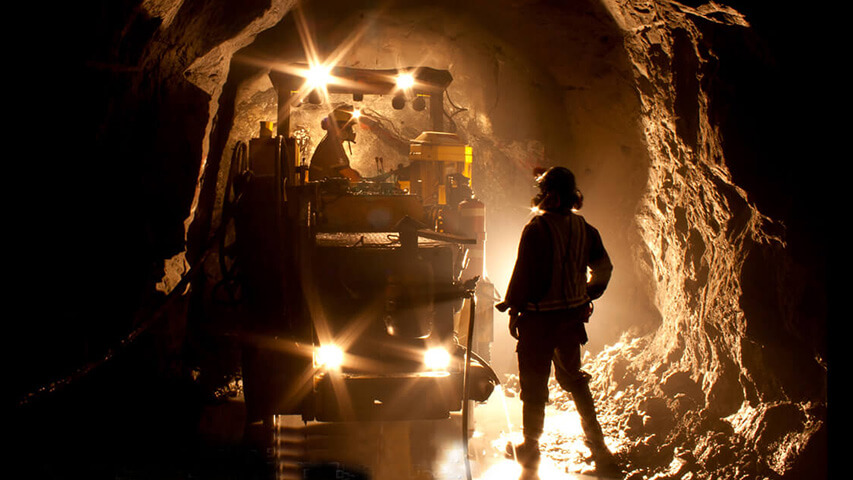
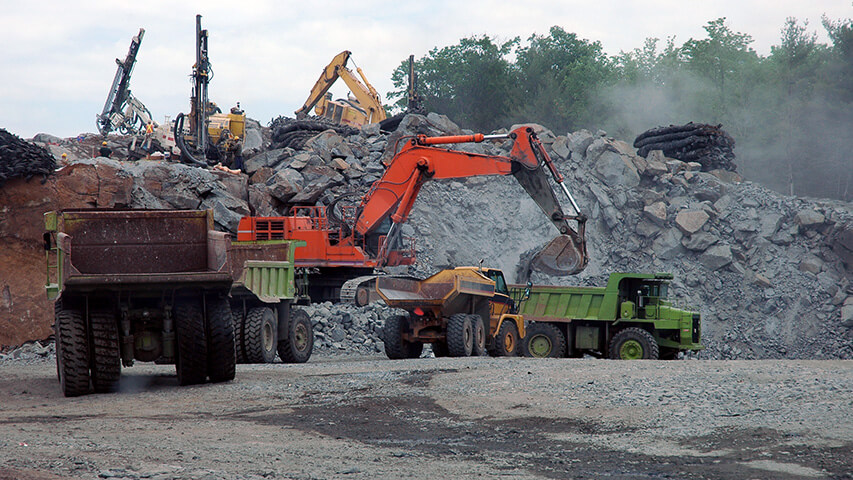
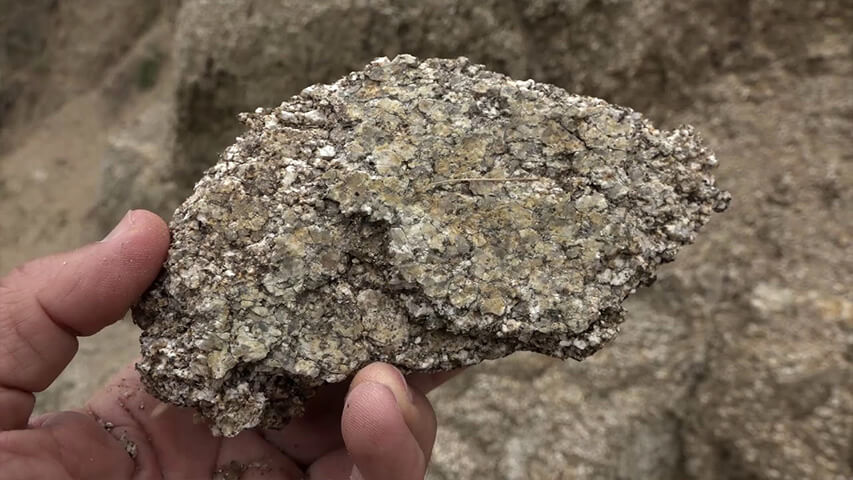
From some of these outcrops, along the path that leads from Pulmarí to the lake Ñorquinco, several rock blocks were extracted from which at the time (decade of 1980) plates for the manufacturing of floors were obtained. These plates were commercialized in the regional market with the name of “Gris Pulmarí” (grey Pulmarí). The rocks generally present homogeneous color and texture, although the presence of xenolith or resisters of dark color is common, ranging from 1 to 15 cm. of diameter. Veins or small veins can also be observed and they are generally used by quarry workers as structural guides for extraction of blocks.
Crystalline rocks of black color are frequently present in these granitic outcrops; they are gabbros and micro-gabbros which are exposed in continue outcrops on both banks of the river Pulmarí, upstream from the lake Los Giles, and in the area of the quarry Granito Gris Lonco Luan Expte Nº 12782/87 owned by Minera Cordillera del Viento. It is important to mention that in front of the lake Verde, in lands of CorporaciÓ n Interestadual Pulmarí a quarry called “María Juana&rdquo was installed for the extraction of blocks. Today inactive, the quarry is located on the south bank of the river Pulmarí, 46 kilometers away from AluminÉ. It is possible to get to the site through the provincial Route Nº 11, and the exploitation fronts are at the side of this Route. Geology in the area of the quarry is quite simple, with gabbric facies within the Granodiorite Paso de Icalma. It is interpreted as a basic magma pulse of reduced size, emerging in the lowest part of the river valley as isolated bodies. (Cucchi et al, 2006). The outcrops are fractured as consequence of the physical weathering and the relaxation of the material after the glacial retreat (fracturing with deep angular design that originates blocks of small size, of bipyramidal shapes). This effect partially disappears at 2 meters deep, and from then on there is a very hard-fresh black rock.
The outcrop selected back then for the exploitation is an elongated body in direction NW-SE, of approximately 600 meters long and 300 meters wide, divided in smaller pieces by canyons that drain into the river Pulmarí. The estimated exploitation reserves are 135.000 m3, of which 46.000 m3 were recovered until de end of the exploitation.
The following chart summarizes the main physical properties of these rocks, according to trials made in the research center called Centro de Investigación y tecnología aplicada a la Construcción INTI 1994. (in Danieli et al,2011)
| Physical trial | Grey Pulmarí | Black Pulmarí |
|---|---|---|
Density |
2660 Kg/ m3 |
2869 Kg/m3 |
Absorption |
0,20% Kg/ m3 |
0,17%2869 Kg/m3 |
Porosity |
0,31% |
0,26% |
Abrasion |
0,90 mm/1000 m |
1,35mm/1000 m |
Impact |
500 mm |
350 mm |
Dilatation |
7,2 x10-6 /1ºC |
5,4x10-6 /1ºC |
Compression |
136,8 Mpa |
172,1Mpa |
Flexion |
15,7 Mpa |
19,6 Mpa |
Frost resistance capacity |
123,4 Mpa |
160,5 Mpa |
Physical features of granites and gabbros of Pulmarí.
Due to meteoric alteration, there is partial deferrization of gabbros of biotites, augite and opaque minerals, which produces chromatic variations in the rocks and lack of competition. In polished plates this can be seen as oxidized brownish dots, a little bit clearer than the main color.



In a preliminary research on the technological features of the granites located in this area, Betancur and Casé (2001) took into account for the technological characterization of the rock a series of aptitude rules that are related to the specific use as ornamental rock.
The rock was classified as a medium-grain granite, of whitish grey color made up of quartz, plagioclase, alcali feldspar, biotite and hornblende. As accessory minerals the following are described: pyrite, apatite, zircon and titanite. Alteration minerals are cryptocrystalline clays, smectites, clorite and epidote. According to their mineralogy, these rocks were genetically classified as monzogranites and syenogranites.
In terms of its macroscopic properties, the structure analysis showed a fracturing density of about 40% per square meter; from the point of view of its state of freshness, the present alteration is considered as moderate, presenting plagioclase and feldspar a 10 or 20% replacement by clayey minerals. The quartz presented slightly corroded edges, while mafites (biotite and hornblende) were altered in 20 and 30% of their surface.
With respect to intrinsic properties it was determined for the rock a Pe of 2,24 gr/cm³ and an absorption percentage of 0,45%. Resistance to abrasion was estimated using the norm IRAM 1539 NIO (hardness of rocks by friction), and the measured average wear was of 1,61 mm in a distance of 1000 m.
By means of atmospheric simulation trials it was possible to know the behavior of the rock against external agents, with attacks of SO4H 2 (acid rains) ClNa (saline mist) and FH and HNO3 solution (simulating environment contamination).
Samples of these rocks were also tested by domestic chemical attack trials simulating contact situations of the material with the following abrasive agents, among others: detergents, bleach, weak citric and acetic acids). In relation to the ornamental features, according to universal and normalized color charts ( Nestiero,1994,b, in Betancur and Casé,2001) the granite is grey with a stained and lumpy design with irregular groups of minerals and agglutinations of several contrasting colors.
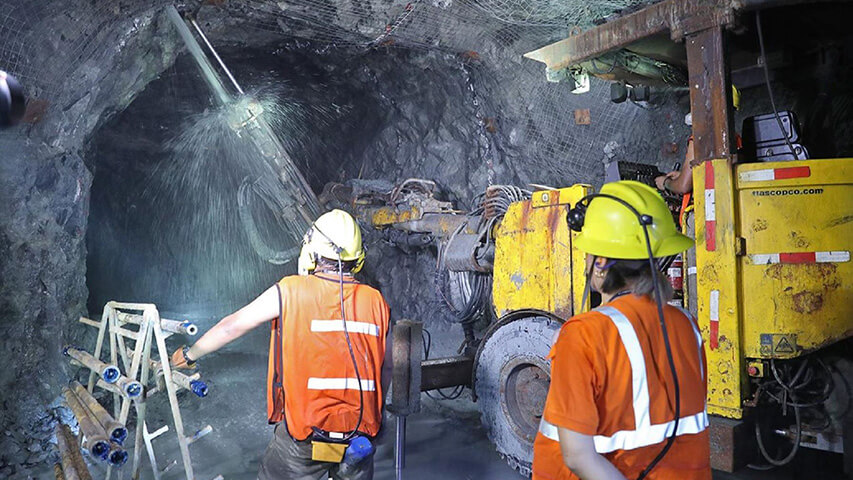
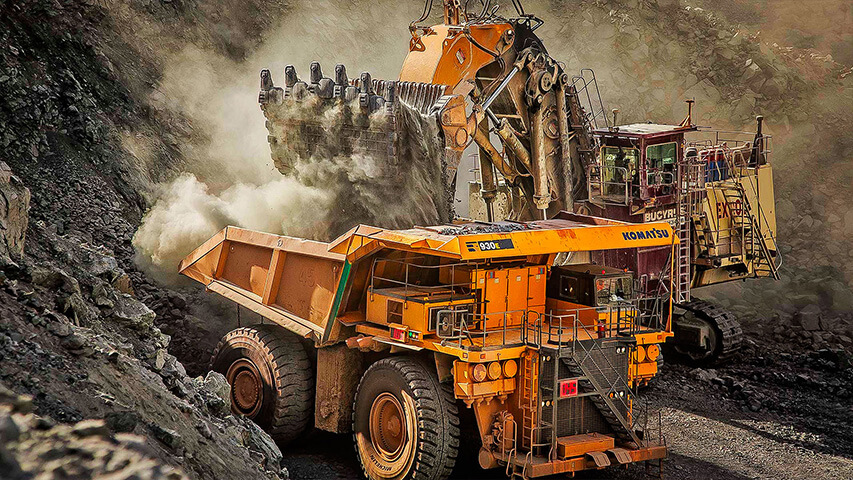
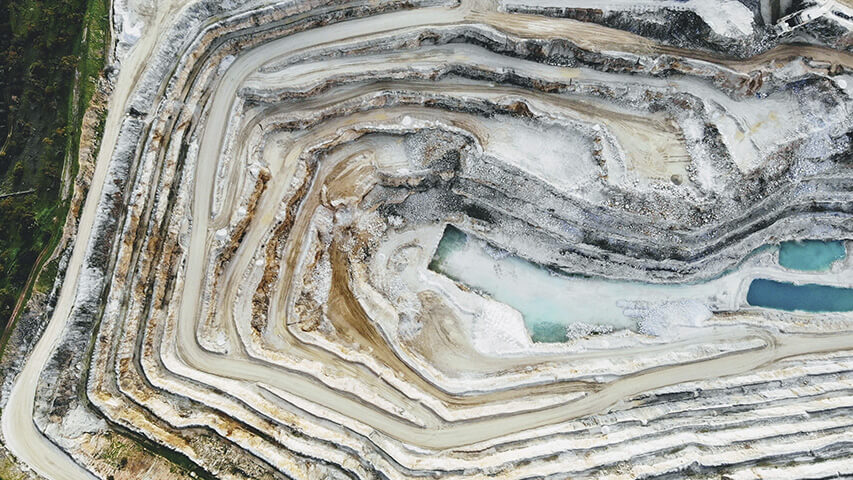
The rock was classified as a medium-grain granite, of whitish grey color made up of quartz, plagioclase, alcali feldspar, biotite and hornblende. As accessory minerals the following are described: pyrite, apatite, zircon and titanite. Alteration minerals are cryptocrystalline clays, smectites, clorite and epidote. According to their mineralogy, these rocks were genetically classified as monzogranites and syenogranites.
In terms of its macroscopic properties, the structure analysis showed a fracturing density of about 40% per square meter; from the point of view of its state of freshness, the present alteration is considered as moderate, presenting plagioclase and feldspar a 10 or 20% replacement by clayey minerals. The quartz presented slightly corroded edges, while mafites (biotite and hornblende) were altered in 20 and 30% of their surface.
With respect to intrinsic properties it was determined for the rock a Pe of 2,24 gr/cm³ and an absorption percentage of 0,45%. Resistance to abrasion was estimated using the norm IRAM 1539 NIO (hardness of rocks by friction), and the measured average wear was of 1,61 mm in a distance of 1000 m.
By means of atmospheric simulation trials it was possible to know the behavior of the rock against external agents, with attacks of SO4H 2 (acid rains) ClNa (saline mist) and FH and HNO3 solution (simulating environment contamination).
Samples of these rocks were also tested by domestic chemical attack trials simulating contact situations of the material with the following abrasive agents, among others: detergents, bleach, weak citric and acetic acids). In relation to the ornamental features, according to universal and normalized color charts ( Nestiero,1994,b, in Betancur and Casé,2001) the granite is grey with a stained and lumpy design with irregular groups of minerals and agglutinations of several contrasting colors.



Considering the characteristics of these granitic outcrops in relation to their bedding and geometry, the available information about its technological features and their favorable infrastructure conditions (close to the provincial route, easy access to the outcrops and proximity of electric energy and water) it is possible to say that the site gathers the appropriate requirements for the installment of a quarry.
However, the steps suggested by Danderfer (2006) must be followed, although starting with the formal definition and establishment (together with the Mapuche community) of the conditions needed for an eventual exploitation. This community has the possession of the lands in the region. Afterwards, the conditions of the local and regional markets should be researched in order to adjust the economic variables of the venture taking into account the large variety of granitic rocks imported currently that are part of the regional and national offer. There is no doubt about the acceptance of the material in the market considering that it can compete with the granite Gris Mara (grey Mara) which comes from Córdoba. Gabbros and micro-gabbros could also compete, although in this case it is convenient to consider in the feasibility analysis the experiences of the quarry María Juana, which was able to exploit several blocks of this material without reaching the desired continuity for the project.
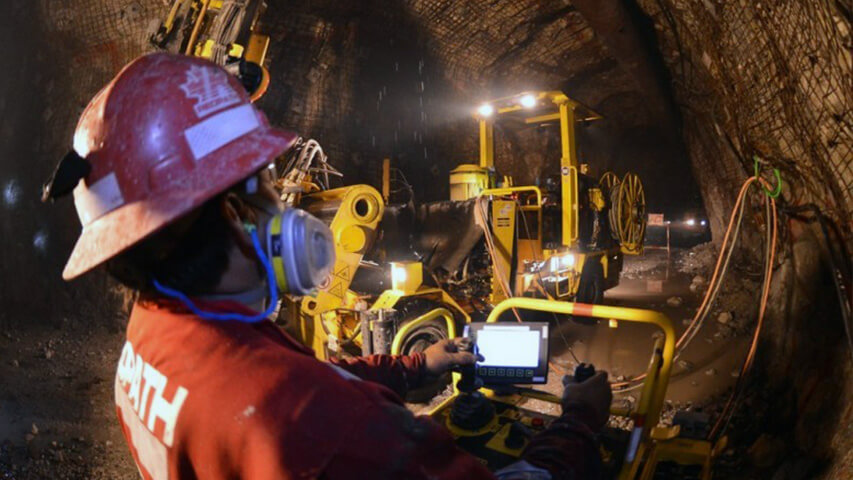
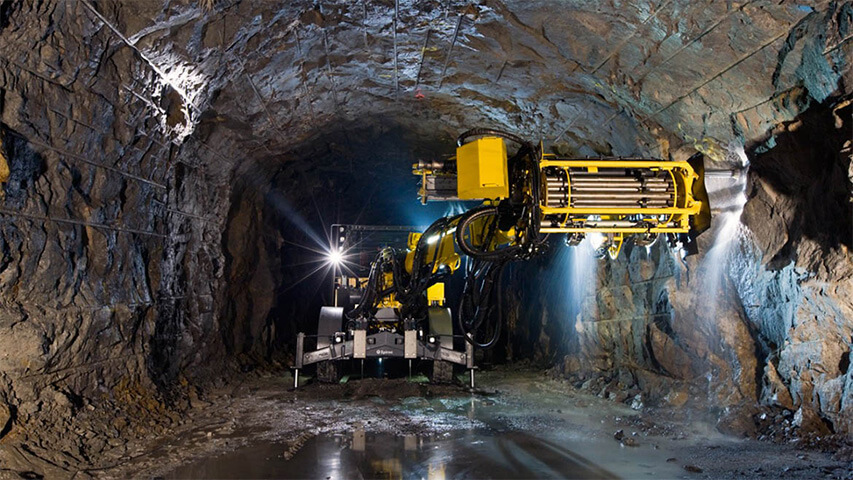
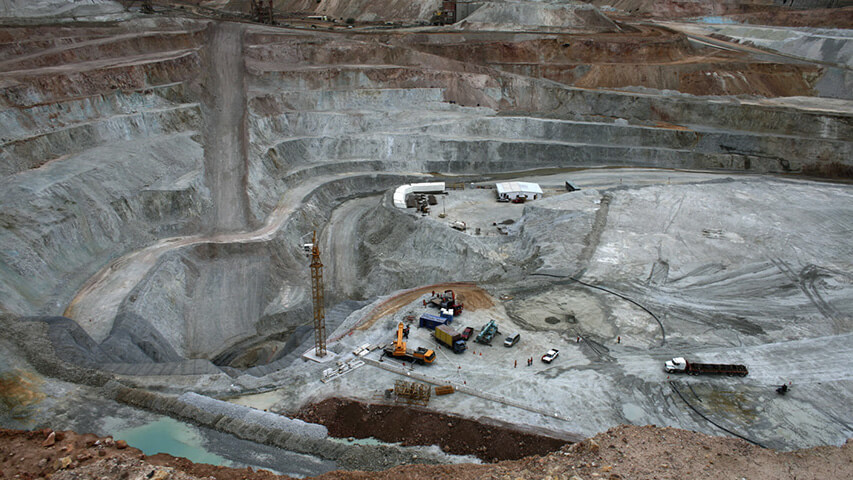
However, the steps suggested by Danderfer (2006) must be followed, although starting with the formal definition and establishment (together with the Mapuche community) of the conditions needed for an eventual exploitation. This community has the possession of the lands in the region. Afterwards, the conditions of the local and regional markets should be researched in order to adjust the economic variables of the venture taking into account the large variety of granitic rocks imported currently that are part of the regional and national offer. There is no doubt about the acceptance of the material in the market considering that it can compete with the granite Gris Mara (grey Mara) which comes from Córdoba. Gabbros and micro-gabbros could also compete, although in this case it is convenient to consider in the feasibility analysis the experiences of the quarry María Juana, which was able to exploit several blocks of this material without reaching the desired continuity for the project.



Betancur,R.F., and Casé A.M.,2001. Technological characterization of a granite quarry, Aluminé, Neuquén. VII Argentine Congress of Economic Geology, 2, 129-133. Salta, Argentina.
Consultores del Plata y Asociados. CONSEJO FEDERAL DE MINERÍA- COPADE. 1975, Mining Development of Neuquén. COPADE. Neuquén.
Danieli,JC, Casé A.M, Leanza,H. and Bruna M. 2011. Minerals and industrial rocks. Geology and natural resources of the province of Neuqué n. Report of the XVIII Argentine Geologic Congress. pp 725-744. Neuqué n.
Consultores del Plata y Asociados. CONSEJO FEDERAL DE MINERÍA- COPADE. 1975, Mining Development of Neuquén. COPADE. Neuquén.
Danieli,JC, Casé A.M, Leanza,H. and Bruna M. 2011. Minerals and industrial rocks. Geology and natural resources of the province of Neuqué n. Report of the XVIII Argentine Geologic Congress. pp 725-744. Neuqué n.
OTHER MINING PROJECTS
Gold, silver, copper-molybdenu and base metals.
Potassium, asphaltites and biogenetic sulfur.

